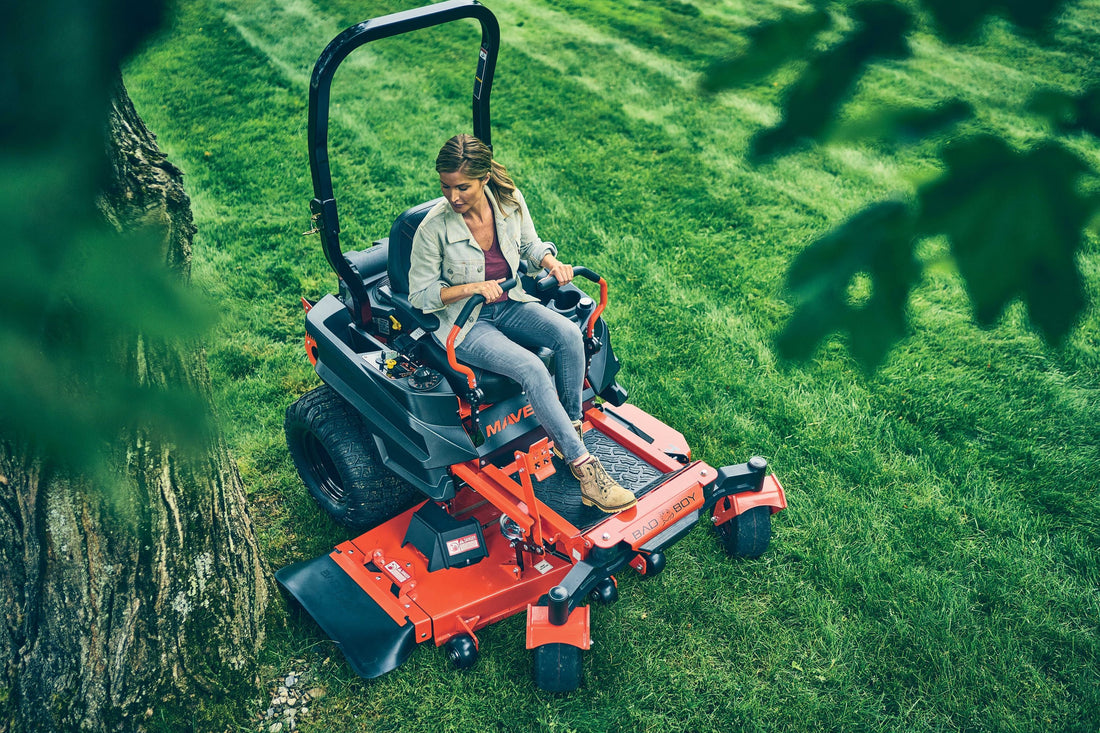
Top Zero-Turn Mowing Mistakes to Avoid This Spring
Share
Top Zero-Turn Mowing Mistakes to Avoid This Spring
Spring is finally here! The sun is shining, the birds are chirping, and your lawn is… well, probably a bit shaggy after the winter. You're itching to fire up your zero-turn mower and reclaim your yard. But before you do, let's talk about some common zero-turn mowing mistakes that can not only damage your lawn but also shorten the lifespan of your mower. Avoid these pitfalls, and you'll be well on your way to a perfectly manicured lawn all season long.
1. Ignoring Pre-Season Maintenance:
Just like your car, your zero-turn needs some TLC after a long winter's nap. Don't just pull it out of the shed and expect it to run perfectly. Before the first mow, give it a thorough check-up. This includes:
- Changing the oil and filter: Fresh oil ensures smooth engine operation.
- Sharpening or replacing the blades: Dull blades tear the grass, leaving it susceptible to disease and pests, and making your mower work harder.
- Checking belts and pulleys: Look for wear and tear, cracks, or fraying. Replace as needed.
- Inspecting the tires: Ensure proper inflation for a level cut and optimal performance.
- Cleaning the mower deck: Remove any accumulated debris from last season.
Neglecting these simple maintenance tasks can lead to costly repairs down the road.
2. Cutting the Grass Too Short:
This is one of the most common and damaging mistakes. Scalping your lawn stresses the grass, making it vulnerable to weeds, disease, and drought. A good rule of thumb is to remove no more than one-third of the grass blade at a time. Adjust your cutting deck to the proper height for your grass type. It's always better to err on the side of caution and cut a little higher.
3. Mowing a Wet Lawn:
Mowing wet grass is a recipe for disaster. It clumps, clogs the mower deck, and can lead to an uneven cut. Plus, it can spread lawn diseases. Wait until the grass is dry before you start mowing.
4. Mowing at the Wrong Speed:
While zero-turns are known for their speed and maneuverability, mowing at full throttle isn't always the best approach. Going too fast can result in a choppy cut and can also be dangerous. Find a comfortable speed that allows you to maintain control and achieve a clean, even cut.
5. Neglecting Safety Precautions:
Operating a zero-turn mower can be dangerous if you're not careful. Always wear appropriate safety gear, including:
- Safety glasses: Protect your eyes from flying debris.
- Closed-toe shoes: Protect your feet from the mower blades.
- Hearing protection: Zero-turns can be loud, and prolonged exposure to noise can damage your hearing.
Also, be sure to clear your lawn of any obstacles before you start mowing, and never operate the mower under the influence of drugs or alcohol.
6. Ignoring the Mower's Manual:
Your mower's manual is your best friend. It contains valuable information about maintenance, operation, and safety. Take the time to read it and familiarize yourself with your specific model.
7. Not Using the Right Mowing Pattern:
A haphazard mowing pattern can result in an uneven cut and a less-than-perfect lawn. Overlapping your passes slightly and using a consistent pattern (like back and forth or circular) will ensure a uniform cut. Consider alternating your mowing pattern each time you mow to prevent soil compaction.
8. Forgetting to Mulch or Bag Clippings:
Mulching your grass clippings is a great way to add nutrients back into your lawn. If you don't want to mulch, bagging the clippings is the next best option. Leaving them on the lawn can create a thatch buildup, which can suffocate the grass.
9. Improper Storage:
When you're finished mowing for the season, don't just park your zero-turn in the shed and forget about it. Proper storage is essential for maintaining its condition. Clean the mower thoroughly, change the oil, and stabilize the fuel. Store it in a dry, covered area.
By avoiding these common zero-turn mowing mistakes, you'll not only keep your lawn looking its best but also extend the life of your mower. Happy mowing!
